I do know that behind each nice firm, division, or group is a good organizational construction — a construction tailor-made to an organization‘s, division’s, or group’s targets and one which helps workers perceive how they match into the larger image. These are the basic constructing blocks of your enterprise.

A few months in the past, I drew my very own group chart for the primary time, and I used to be fairly proud seeing my firm construction outlined in entrance of me.
![→ Download Now: The Illustrated Guide to Org Charts [Free Guide + Templates]](https://no-cache.hubspot.com/cta/default/53/7cbd0328-6c8c-40e0-98dd-c3b6e6be96f0.png)
Other than my success, the organizational construction helped the group perceive their place throughout the firm, the group they’re part of (regardless that they’re not at all times working collectively), and the numerous position every individual performs.
With out the right construction and constructing blocks in place, a enterprise might fail to operate effectively and even collapse. Nevertheless, new enterprise homeowners or companies experiencing fast development might not know which organizational construction is greatest for them and why.
So how do you resolve which sort of organizational construction is the perfect match in your firm, division, or group? Earlier than we are able to reply that, we first want to know how an organizational construction is constructed.
Let’s discover 9 key elements of organizational construction utilizing some visible examples.
9 Constructing Blocks of Organizational Construction
- Chain of Command
- Span of Management
- Centralization and Decentralization
- Specialization
- Formalization
- Departmentalization
- Useful construction
- Divisional Construction
- Matrix Construction
1. Chain of Command
One of the crucial primary components of an organizational construction, the chain of command, is precisely what it appears like: an unbroken line of authority that extends from the highest of the group (e.g. a CEO) all the way in which all the way down to the underside. Chain of command clarifies who experiences to whom throughout the group.
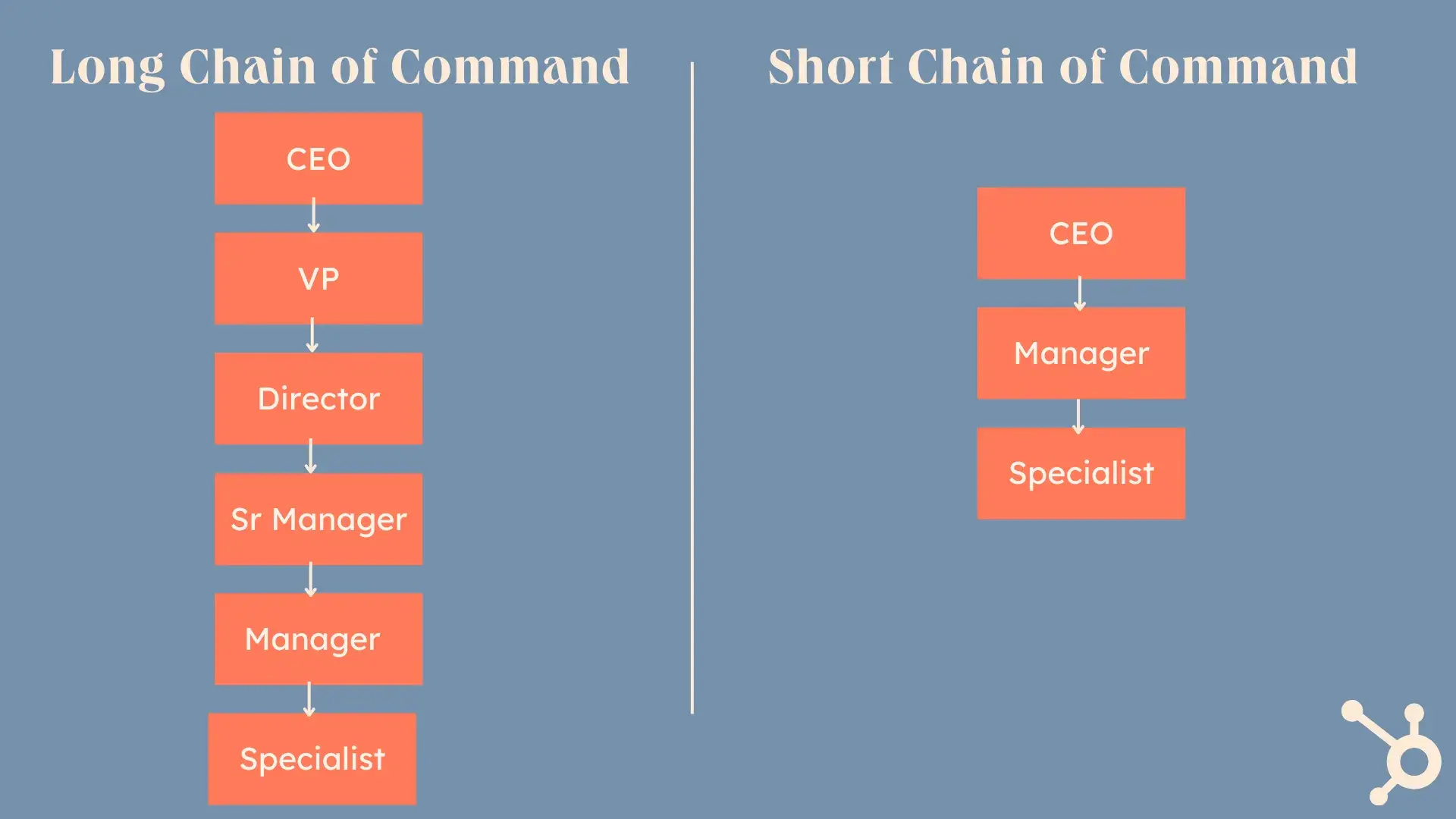
2. Span of Management
Span of management refers back to the variety of subordinates a superior can successfully handle. The upper the ratio of subordinates to superiors, the broader the span of management.
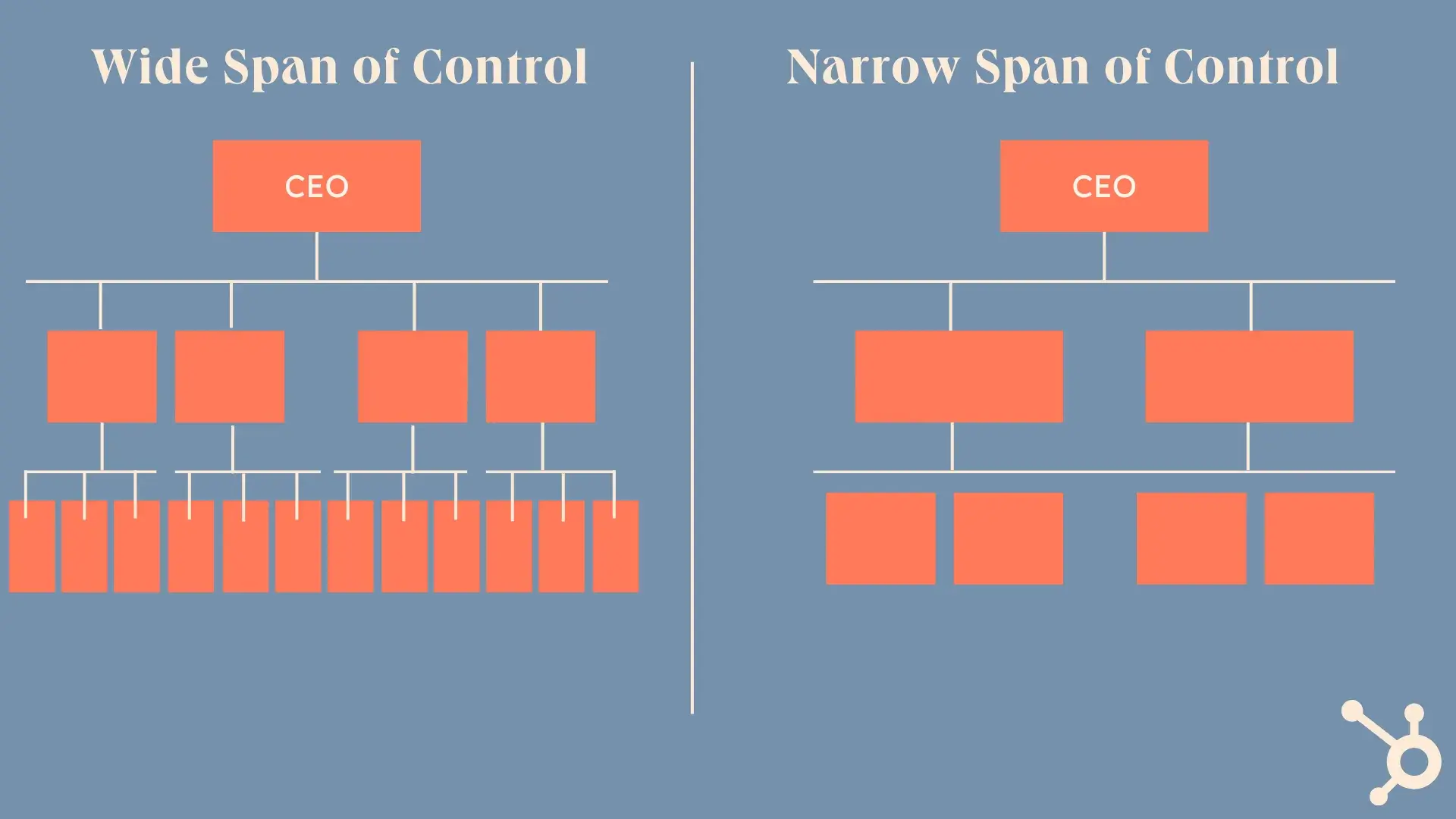
3. Centralization and Decentralization
Who makes the choices in a company? If decision-making energy is concentrated at a single level, the organizational construction is centralized. If decision-making energy is unfold out, the construction is decentralized.
Whereas a decentralized construction promotes a extra democratic decision-making course of, it will probably additionally gradual it down, making it harder for organizations to function effectively.
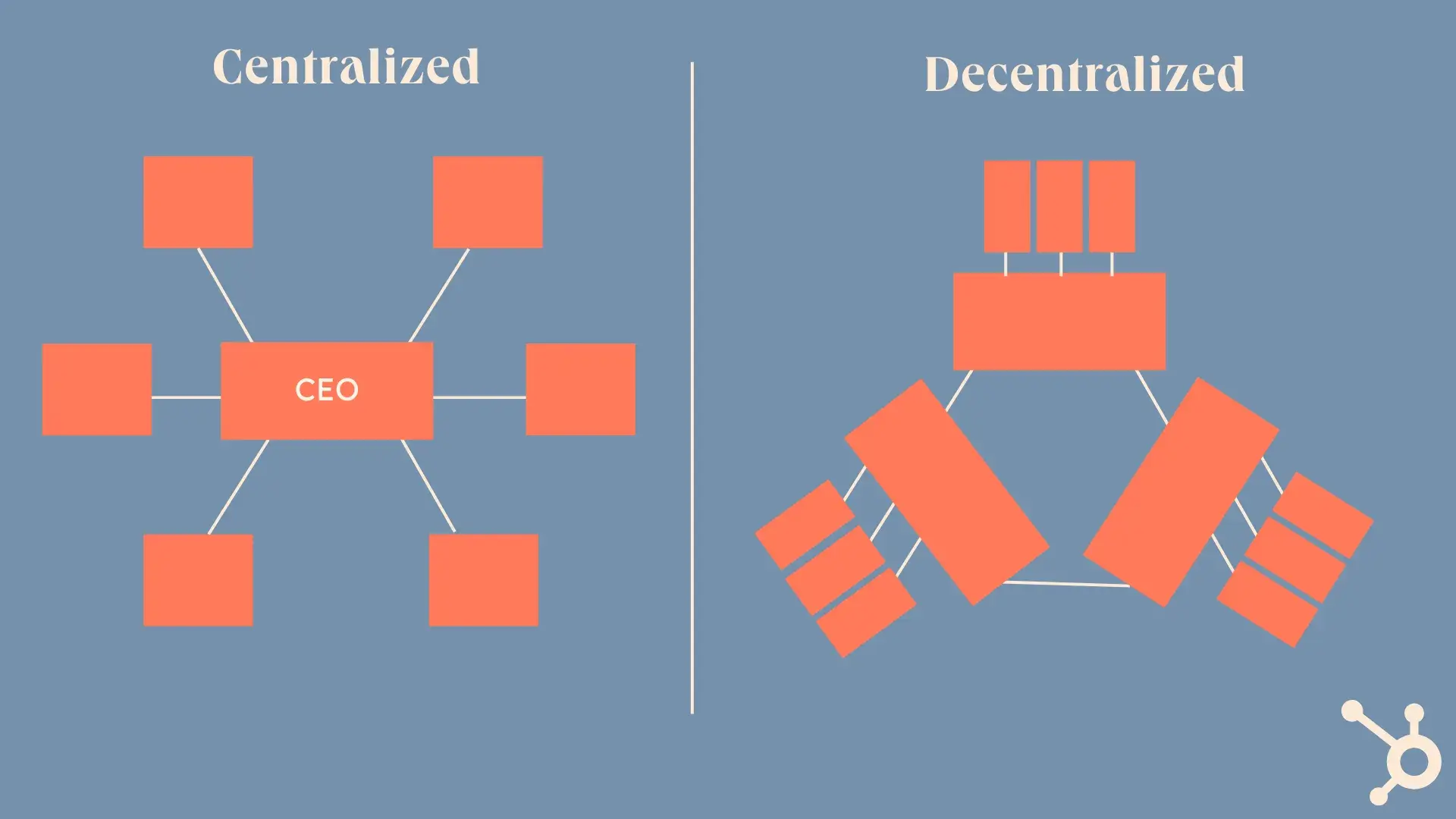
4. Specialization
Often known as division of labor, specialization is the diploma to which actions or duties in a company are damaged down and divided into particular person jobs.
Excessive specialization will be helpful for a company, because it permits workers to turn into “masters” in particular areas, rising their productiveness consequently.
Nevertheless, low specialization permits for extra flexibility, as workers can extra simply deal with a broader array of duties (versus being specialised for a single job).
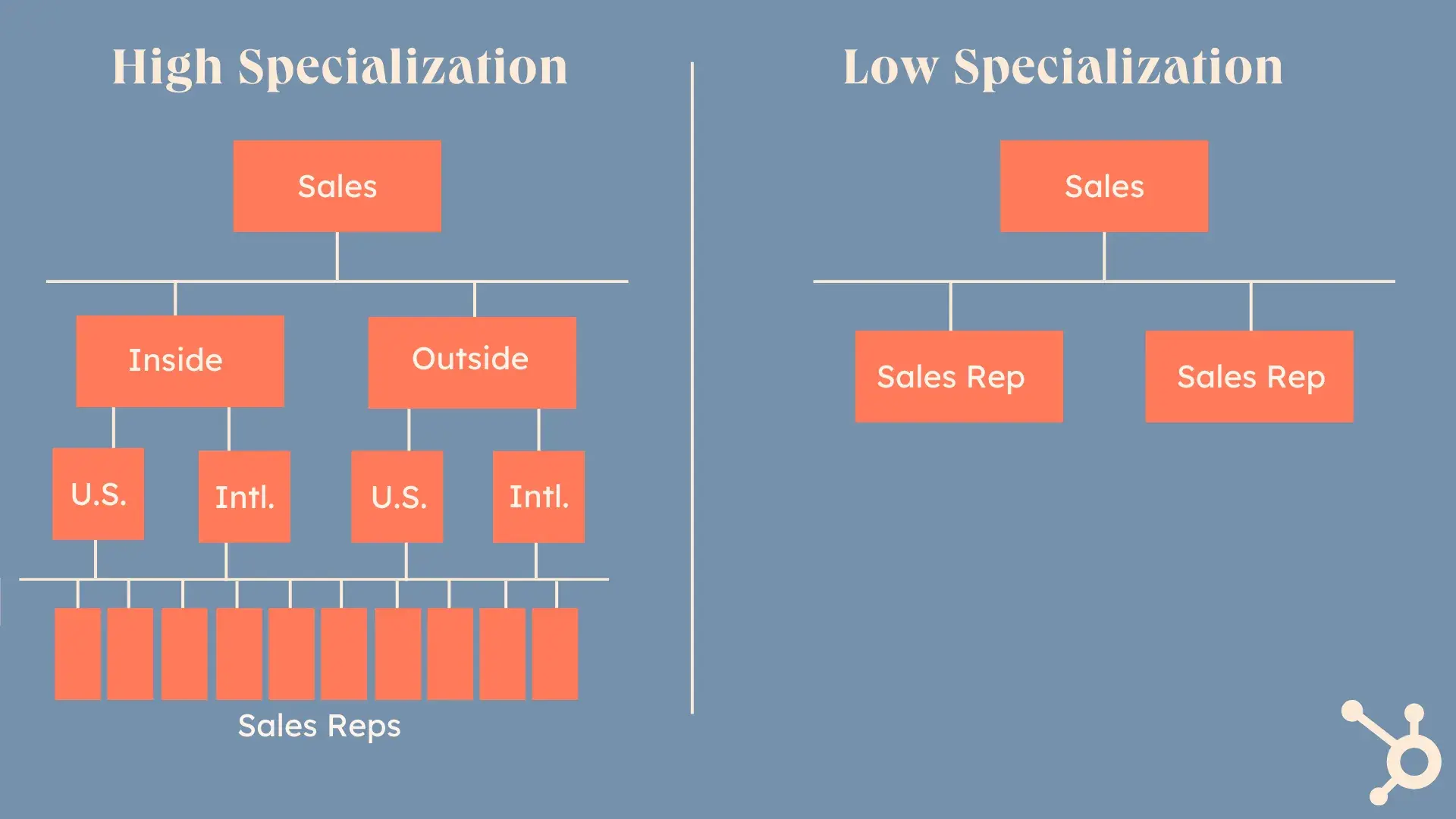
5. Formalization
Just like specialization, formalization offers with how jobs are structured inside a company. The important thing differentiator right here is that formalization additionally considers the diploma to which guidelines, procedures, and different mechanisms govern an worker’s duties and actions.
A proper organizational construction seeks to separate the person from the position or place, because the position or place stays the identical no matter who’s holding it. An off-the-cuff group, however, locations extra worth on the person. It permits for the evolution of a job or place based mostly on a person’s preferences, talent set, and so on., and locations much less significance on what group or division that particular person is a part of.
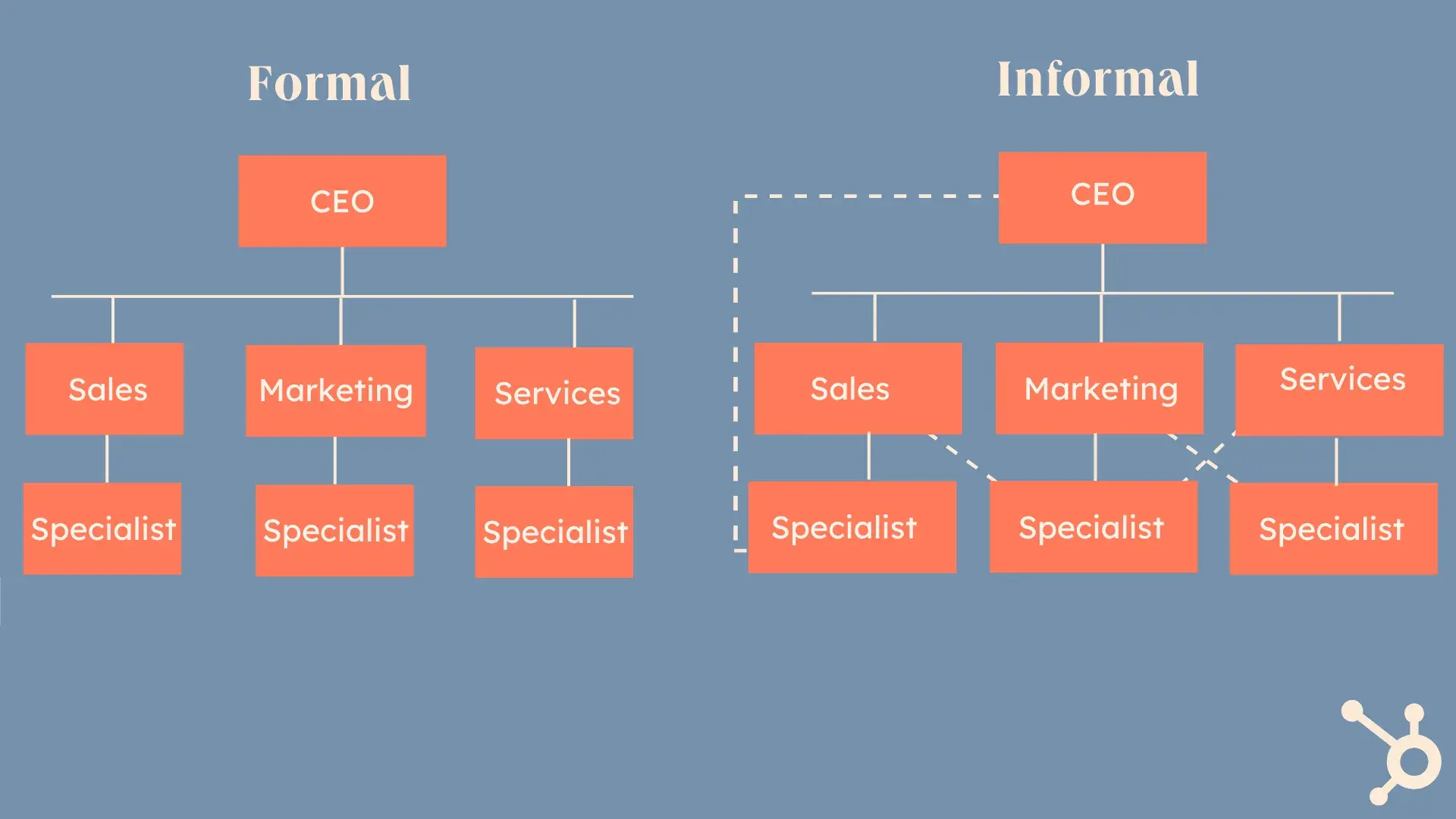
6. Departmentalization
Departmentalization refers back to the strategy of grouping jobs collectively with a view to coordinate frequent actions and duties.
If a company has inflexible departmentalization, every division or group is very autonomous, and there’s little (or no) interplay between completely different groups. In distinction, free departmentalization entails that groups have extra freedom to work together and collaborate.
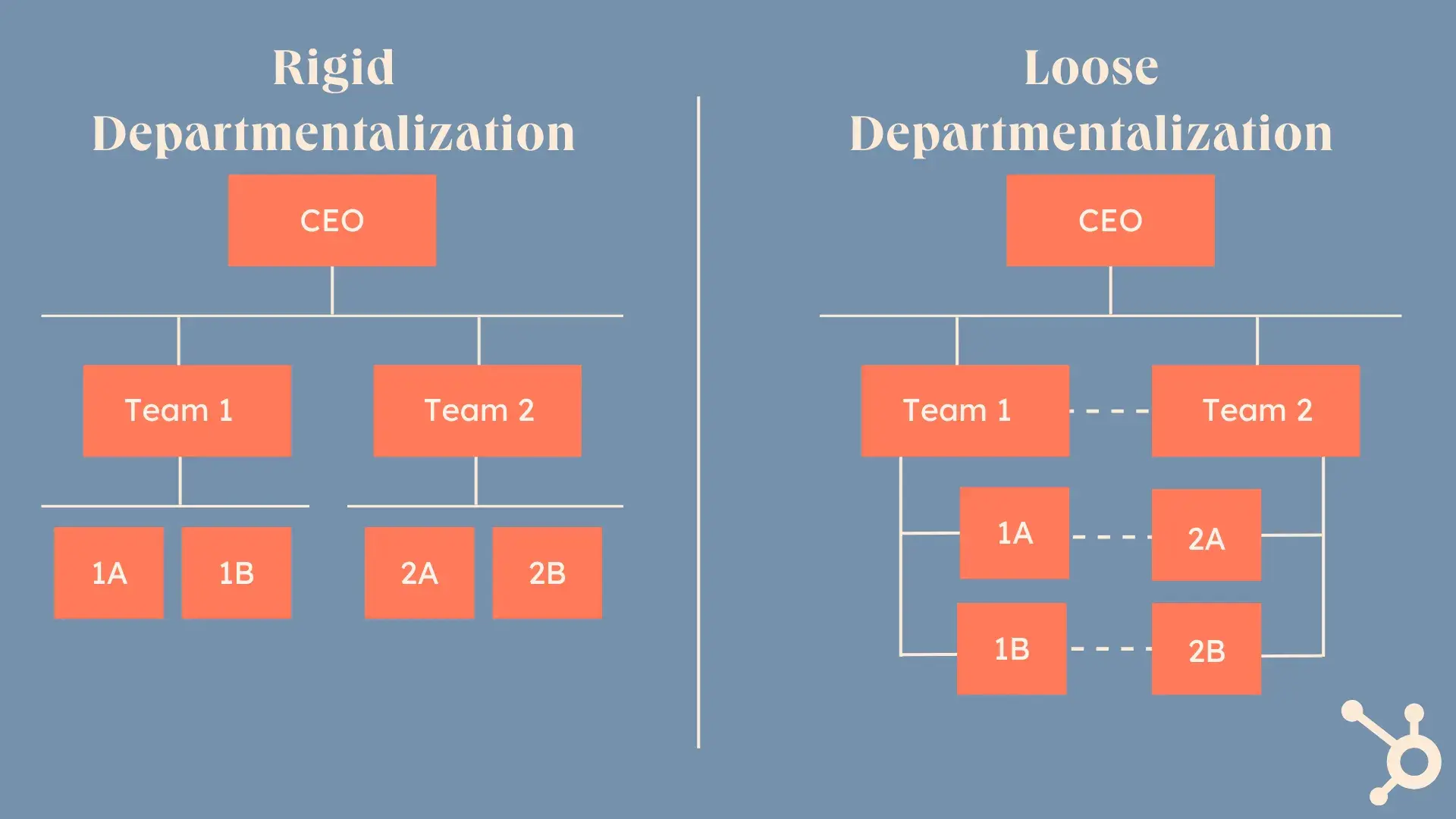
It’s price noting that the way in which wherein a company departmentalizes is usually used as a proxy for the general kind of organizational construction that group has.
7. Useful Construction
A purposeful construction organizes an organization into departments reminiscent of gross sales, advertising, finance, HR, and so on.
A purposeful construction creates outlined roles and specialists however may also result in groups working in silos and create communication issues.
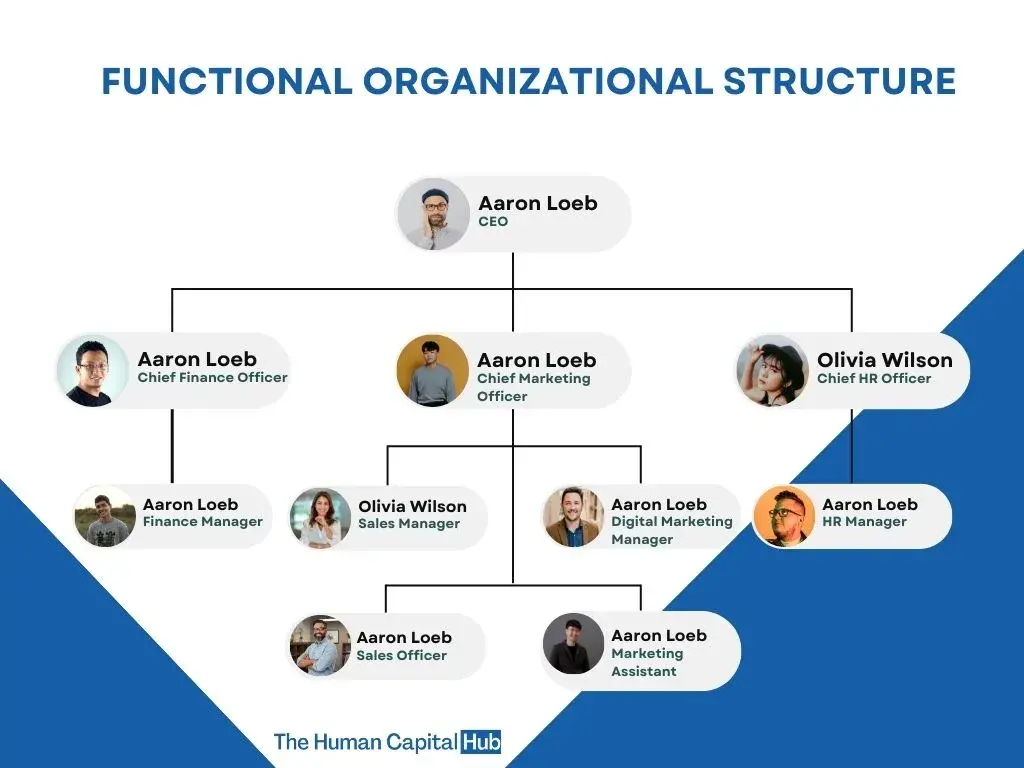
Supply
8. Divisional Construction
A divisional construction organizes groups by merchandise, markets, or geographic places, enabling every division to function independently and deal with particular wants.
This construction gives flexibility and fosters accountability by division, and divisions act like mini-businesses, often with their very own administration and departments, as you may see within the infographic under.
The divisional construction will be resource-intensive and inefficient if roles are duplicated throughout divisions with out correct coordination. It most closely fits massive organizations reminiscent of world manufacturers McDonalds, Pepsi, or Johnson & Johnson.
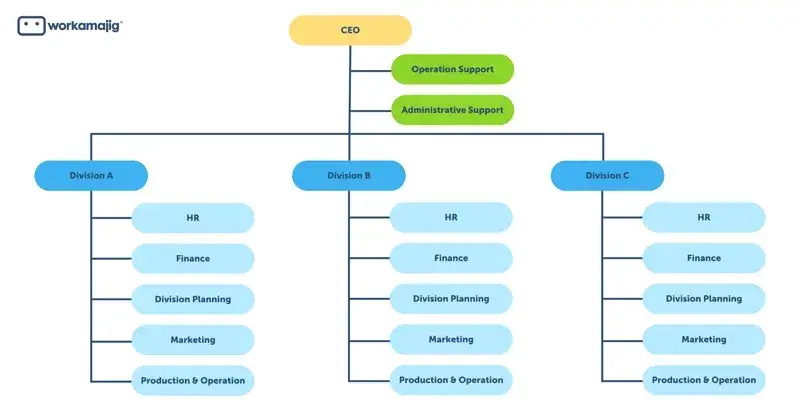
Supply
9. Matrix Construction
A matrix construction combines purposeful and divisional buildings.
Workers report back to mission managers, which promotes collaboration and suppleness and permits cross-functional teamwork.
Nevertheless, it will probably turn into advanced, create conflicting calls for, and result in confusion. It really works greatest for organizations needing collaboration throughout departments or managing a number of tasks concurrently.
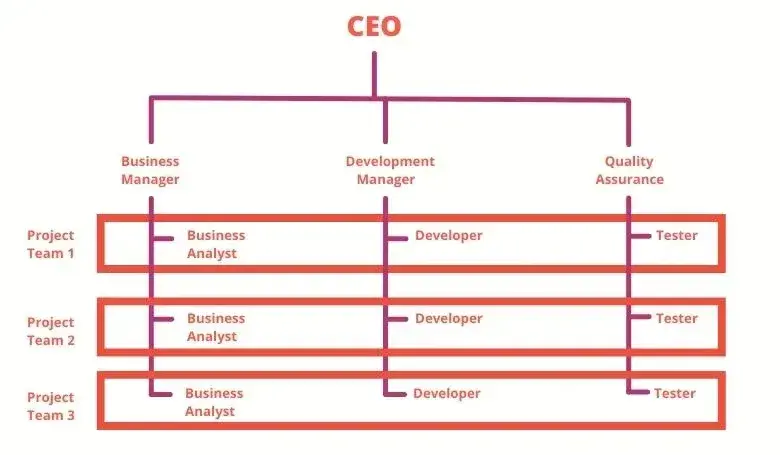
Supply
The Proper Organizational Construction for You
At present, my enterprise in all probability makes use of a centralized construction, which is okay since my operation may be very small. Nevertheless, all selections funnel again to the central level (me), which I do not love!
Researching the forms of organizational buildings helps me see the place I might prefer to take my enterprise and provides me one thing to purpose for.
It‘s vital to notice that firm measurement isn’t what determines the suitable construction for you. Earlier than deciding in your firm’s construction you will wish to take into consideration a variety of issues like your organization tradition, product/service, the business, projected development, and a lot extra.
If you wish to study extra about purposeful organizational buildings, in addition to different forms of buildings, obtain the total useful resource under.
Editor’s be aware: This submit was initially revealed in November 2014 and has been up to date for comprehensiveness.


![The 9 Constructing Blocks of a Enterprise’s Organizational Construction [With Diagrams] The 9 Constructing Blocks of a Enterprise’s Organizational Construction [With Diagrams]](https://i0.wp.com/www.hubspot.com/hubfs/business-building-blocks-1-20250109-2858404.webp?w=1068&resize=1068,0&ssl=1)

